Jaipur, The Capital city of Rajasthan has always made sure to captivate its visitors with its spellbound architecture and planned lanes and roads. Established in 1727 by the then Kachvaha ruler, Maharaja Sawai Jai Singh 2, Jaipur is said to be the first planned city in India. The formation of Jaipur was a result of Maharaja Sawai Jai Singh (2)’s visionary thoughts when he decided to shift his capital from Amer which is 11km from the Jaipur region.
With its signature pinkish tones, The Jaipur city is a unique blend of Traditional Heritage and Modernity. One of the most fascinating elements of Jaipur is the relevance of the Royalty in the region. Multiple relics including Hawa Mahal and Amber Palace have witnessed the Aristocracy that once ruled the Jaipur city. In a way, it can be said that Royalty is mixed in the ambience of Jaipur. One delightful region where You will find the hues of Royalty alive, in its full glory, is the City Palace, Jaipur. City Palace is considered the Abode of the Ruler. Constructed at the heart of the Old walled city, the Palace is no less than a town itself with gardens, stables and elephant yards surrounding the many buildings and spreading over more than thirty acres. The City of Palace was built in Chalukya Architecture, Rajput, Mughal and European Architectural designs, giving it a complex and multiethnic demeanour.
Table of Contents
- History and Architecture of City Palace, Jaipur
- Major spots inside the City Palace, Jaipur
- Chandra Mahal
- Diwan-I-Khas
- Pritam Niwas Chowk
- Mubarak Mahal
- Diwan-I-Aam
- Govind devji Mandir
- Conclusion
- Frequently Asked Questions
History and Architecture of City Palace, Jaipur
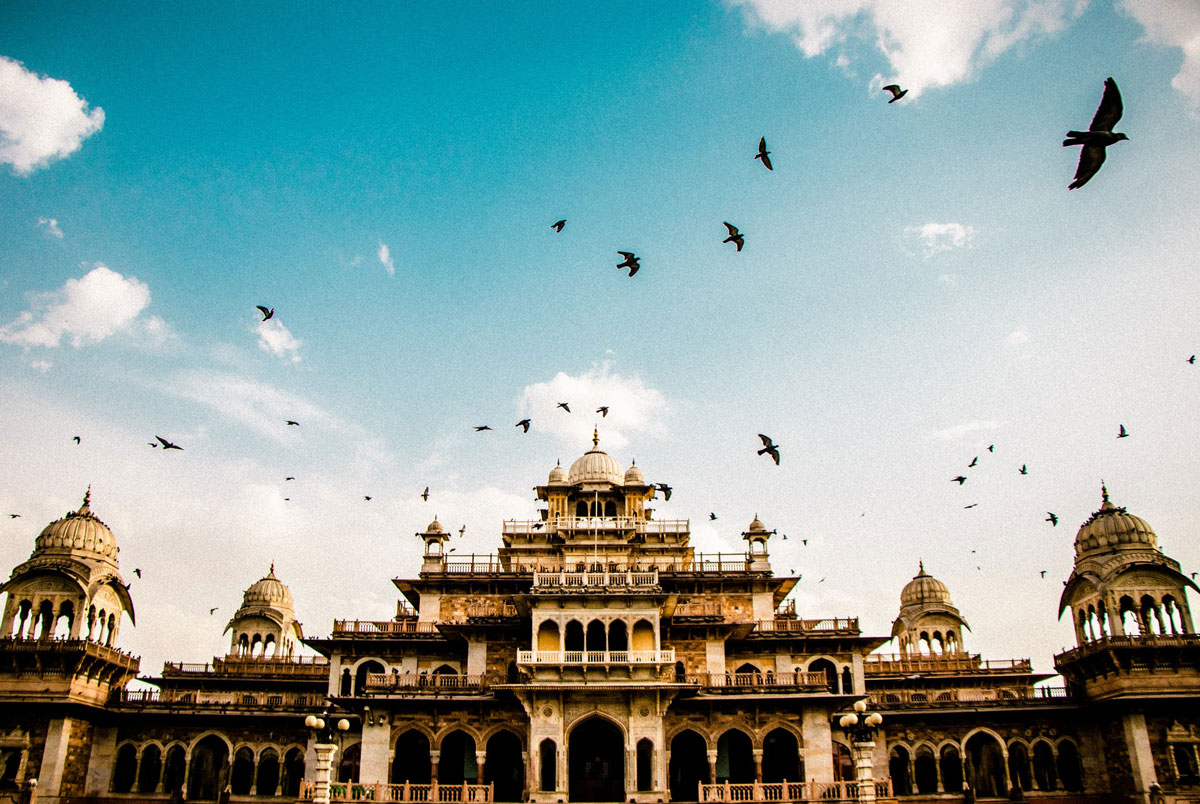
City palace is a bewildering complex of interconnecting courtyards, pavilions, secluded zenana quarters, men’s apartments, audience halls, weapons rooms, large and small sitting rooms, dining rooms, banqueting chambers, and offices. It was the official home of the Maharaja of Jaipur.
The palace was constructed at the same time as the formation of Jaipur city between 1729 to 1732 by the Maharaja Sawai Jai Singh 2.
He called up the Bengal architecture Vidyadhar Bhattacharya, who designed the city of Jaipur and the Complex Palace according to the Vaastu-Shastra. Along with Bhattacharya, the other architect who contributed to the blueprint of the palace was Sir Samuel Swinton Jacob, a European Architect. The whole palace has a dreamlike feeling, with each courtyard and its surrounding rooms giving a new surprise. The whole palace is filled with courtyards, pavilions, the gallery, chamber halls to gardens. The interior of the palace is adorned with scalloped arches on slender columns and latticed marble screens, with galleries and delicate wall paintings. All these edifices appear as a setting for some fabulous fairy-tale. The City Palace has three gateways, Virendra Pol, Udai Pol and Tripolia Gate (triple gate). Virendra Pol and Udai Pol are open to the public, while Tripoia Pol is strictly for the royal family only.
As of today, a part of the City palace has been made public while the other part is exclusively for the Royals. The descendants of the Royals live in the City palace to this date.
Also Read: Religious Visit to Birla Mandir at Jaipur – My Travel Dairy
Major Spots Inside the City Palace, Jaipur
The City palace has several locations that act as a major highlight inside the City Palace adding a charm to the already dramatic destination. The prominent highlights of the palace include the Chandra Mahal, the Mukut Mahal, The Shri Govind Dev Ji temple, The Maharani’s palace, The Mubarak Mahal and the City palace museum.
1. Chandra Mahal
Chandra Mahal was originally the place where the Royals and their descendants stayed. The Chandra Mahal is named after Chandra Kamal, the queen of Sawai Jai Singh, founder of the Jaipur city.
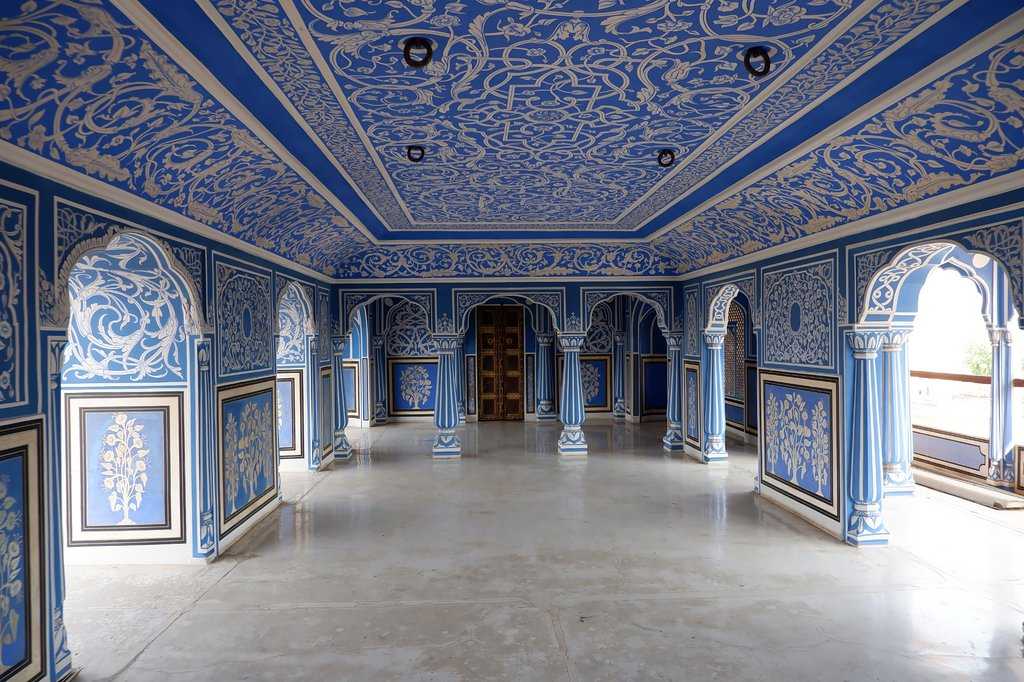
The Mahal is a seven-storeyed structure with each of its floors having its primacy. Each of the floors is named Chabi Niwas, Shri Niwas, Shobha Niwas, Pritam Niwas, Sukh Niwas, Ranga Mandir and Mukut Mandir. Only the ground floor is kept open for the public where they have showcased historical manuscripts and carpets. Sukh Niwas has a dining and drawing hall, while the Royals stay in the Chabi Niwas. The top of the Chandra Mahal is adorned with a flag which is hoisted during the stay of the Royal family in the City Palace. If you tend to visit the Chandra Mahal, you have to pay ₹2000 separately.
2. Diwan-I-Khas
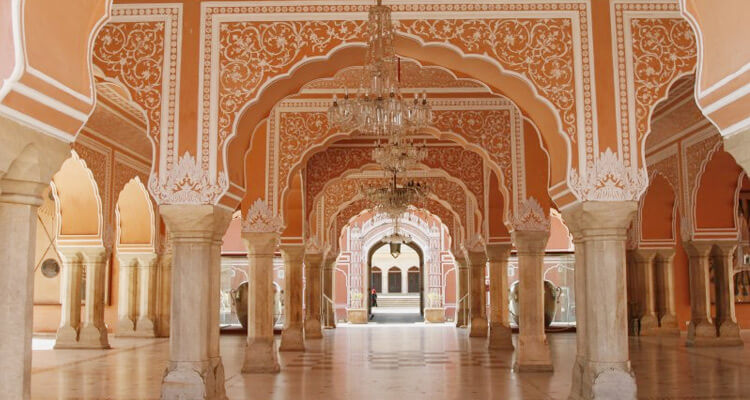
When you enter the Palace, the first thing that catches your eyes are the Diwan-i-Aam hall, where the earlier Rulers held darbars with their ministers regarding state administration. Inside the Hall, there are two gigantic vessels known as Gangajali. These vessels have a capacity of 4000 litres and hold a place in the Guinness book of world records. The hall also has huge chandeliers.
3. Pritam Niwas Chowk
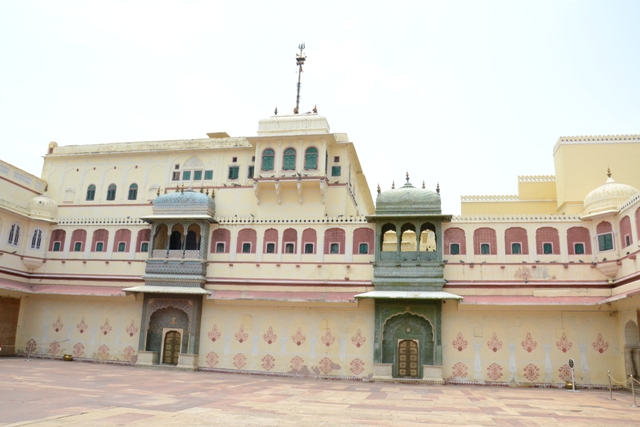
Pritam Niwa’s chowk is the main courtyard in the Chandra Mahal. This Place has four gates that symbolise the four seasons that is Summer, Autumn, Winter and Spring. The peacock gate represents the Autumn season, the Green gate with Summer, the leheriya gate with spring and the rose gate with the winter season. All the gates are fervently dedicated to the Hindu gods and goddesses. The Peacock gate in the Northwest is dedicated to Vishnu, the Green gate in the Northeast represents Ganesha, and the Rose gate in the Southwest adorned with flower patterns is dedicated to the Winter season and the Leheriya gates are dedicated to Lord Shiva.
Also Read: Thing You Should Know Before Travelling To Jaipur
4. Mubarak Mahal
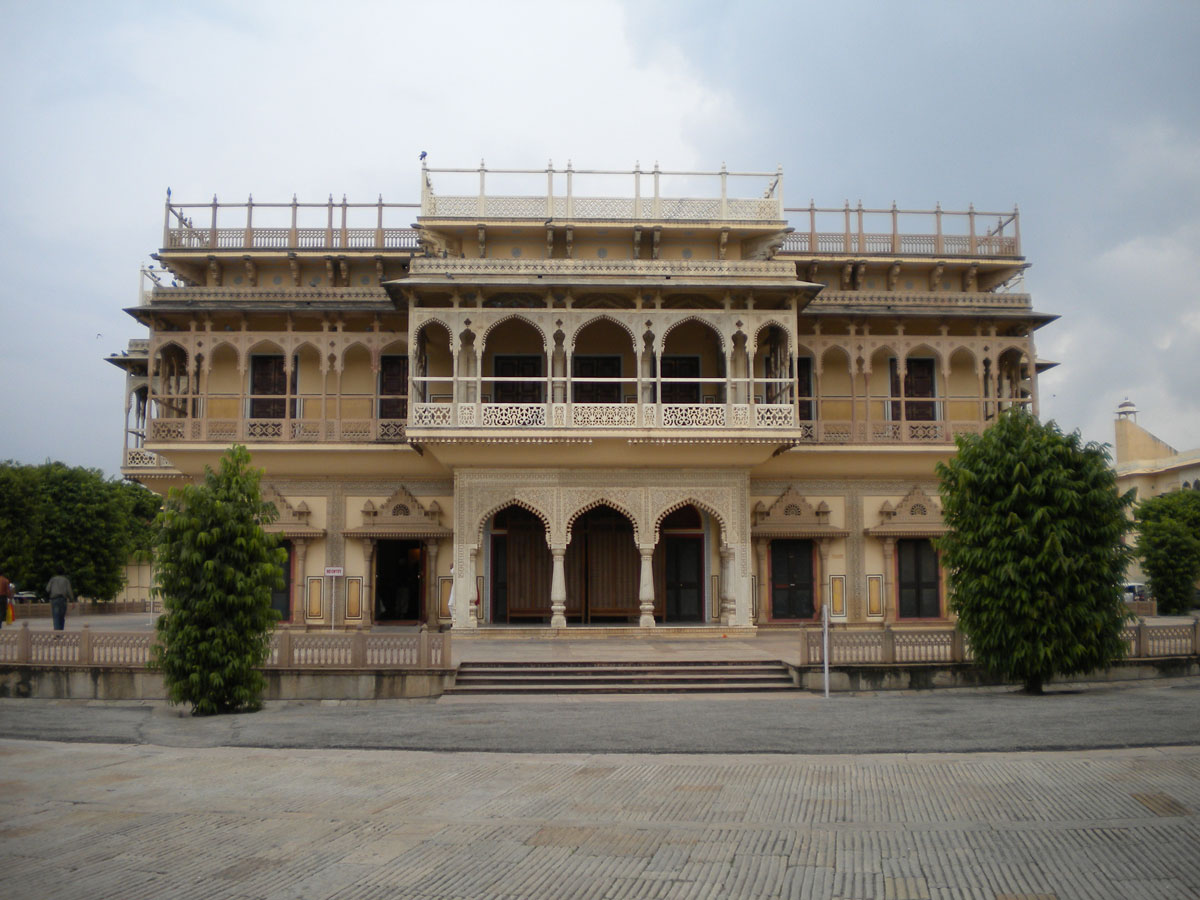
In earlier times, The Mubarak Mahal was built for the accommodation of the guest of the Royal family that came to the City Palace. The construction of the Mahal was commenced by the late ruler Sawai Madho Singh (II) in the 19th century. Currently, the Mubarak Mahal is converted into a museum where artefacts belonging to the late rulers are illustrated including Pashmina shawls, Silk saree and Sanganeri shawls. The most attractive feature of this museum is the mural art on the walls of the reception hall. Another most intriguing feature of the museum is the set of voluminous clothes which were worn by the Late Madho Singh 1, who weighed around 250 kilograms and were 3.9 metres wide.
5. Diwan-I-Aam
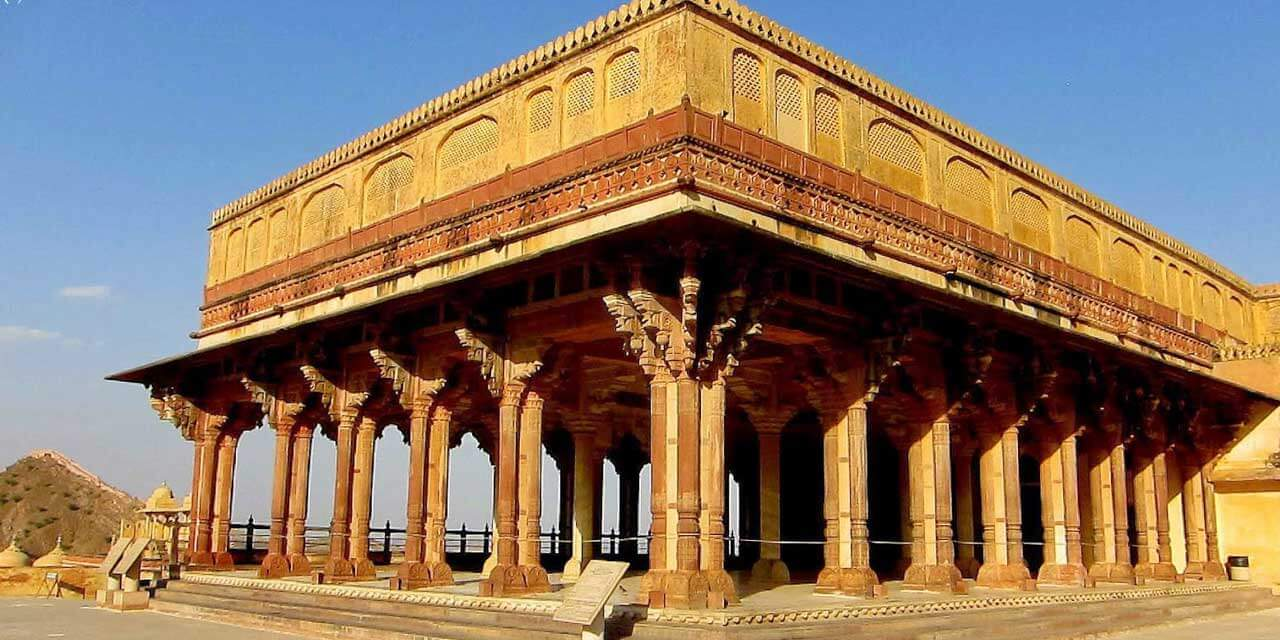
Diwan-I-Aam was a royal durbar where the earlier Rulers held darbars. The Darbars were meant to hear public grievances and get justice, which was considered an essential duty of the King. The Royal throne, known as Takht-e-Rawal and the chairs of the courtyard still adorn the hall of the Diwan-i-Khas. The Hall is adorned with bright red and golden ceilings, and elephants made of marble.
6. Govind devji Mandir
The Govind Devji temple is dedicated to the Lord, Krishna. Traditionally, all the Maharajas governed the state in his name. The ceilings of the temple are made of Gold. The temple is illustrated in Indian art and European chandeliers.
Also Read:10 Reasons To Visit Bikaner – The Ancient City in Rajasthan
Conclusion
The City Palace offers you a tour of the Bygone Era of history which was filled with the Glitters and charms of the Royalty. If you are someone like me who gets fascinated with the Royal life and wants to take a look at the richness of culture held by the earlier rulers, then The City Palace is the must place for you even if travelling to Jaipur is not in your list. Just kidding, the whole city of Jaipur has a tinge of Royalty in it which defines the culture of the pink city. So next time, whenever you plan to visit a metropolis, don’t forget to take a tour of the City Palace, the centre of Jaipur’s glory!
Frequently Asked Questions
What is the exact location of the City Palace in Jaipur?
The City Palace is located in the Jaleb Chowk, Near Jantar Mantar, Tripolia Bazar, Jaipur, and Rajasthan.
What is the Entry fee of the City palace?
Charges are different for different places. Indians are charged Rs 100 and Rs 130 for exterior regions and the museum respectively. While for the foreigners, the Charges are higher with INR 500 for the exterior region and INR 900 for the Museum. The additional cost of 150 Rs is charged for Photography and Videography.
What are the Activities that one can do in the City Palace?
Sightseeing, Vlogging, Learning History and shopping at Tripoli bazaar and other local markets. Guides are also available for convenience, but feel varies as per the number of persons.
What is the Best time to visit City Palace?
The best time to visit the palace is between September to February when the climate of Jaipur is not scorching hot.
What are the Timings of the palace?
The Opening hours of the palace are 9 AM to 5 PM. It takes 3 to 4 hours to visit the entire Palace.

